Original URL: https://www.theregister.com/2008/02/21/review_shuttle_sn68ptg6/
Shuttle XPC Glamour SN68PTG6
Stylish AMD-powered media centre, anyone?
Posted in Channel, 21st February 2008 12:02 GMT
Review If you’ve previously seen a Shuttle XPC barebones PC, the SN68PTG6 will be instantly familiar. It follows the firm's standard small form-factor system design that resembles two cubes attached one to the other, but this time with some design highlights and the firm's Glamour label.
The main cover is retained by three thumbscrews and lifts away to reveal the innards. Undo two more screws and the aluminium drive bay comes out to give access to most of the components. Whip out four more thumbscrews to release the ICE cooling fan, which blows air through the remote CPU cooler, and then release the four screws that retain the CPU heatsink and you’re ready to build your new PC.
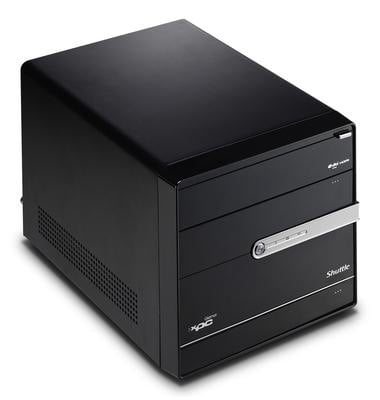
Shuttle's XPC SN68PTG6: DIY PC
Just about the only part of the Shuttle that stays in place in the chassis is the 110W mini power supply that's located on the right-hand side but it doesn’t obscure any of the connectors to which you need to gain access.
The layout of the SN68PTG6 is assisted by the nature of the Nvidia GeForce 7050PV chipset, which is a unified piece of silicon much like the chipset used in the Biostar TF7150U-M7 - reviewed here. That particular motherboard accommodates an Intel Core 2 processor with a GeForce 7150 chipset, while the Shuttle is a Socket AM2 design that uses a slightly lower spec GeForce 7050PV to connect to AMD CPUs. Beyond that the two chipsets are essentially identical.
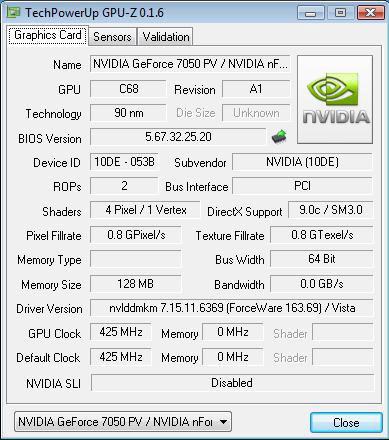
The main feature is the integrated graphics which supports DirectX 9 so you can have the joys of the Aero interface in Windows Vista. On the multimedia side of things, you get hardware decoding that supports Blu-ray and HD DVD along with the HDCP anti-piracy system and a proper digital output. Shuttle has equipped the SN68PTG6 with VGA and HDMI outputs along with a dongle that converts the HDMI feed to DVI.
The Nvidia chipset delivers a very similar specification to the AMD 690 chipset with performance that's very slightly better using both the integrated graphics and an add-in GeForce 8800GT graphics card. The only apparent point of difference between the two chipsets is hard drive performance which can doubtless be laid at the door of the lame AMD ATI SB600 southbridge I/O chip.
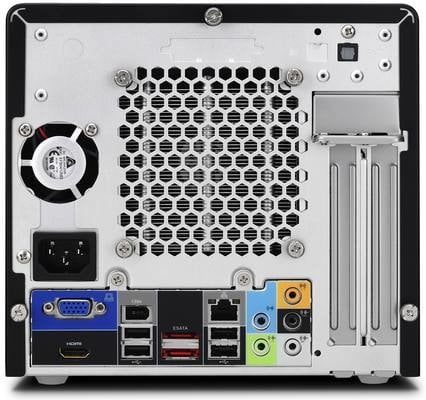
Portage a-plenty?
The choice of graphics outputs means that you have the choice of using the Shuttle as a mini PC that is connected to a TFT display or you can plug it in to your HDTV as a Media Centre PC. Either approach works perfectly well provided you don’t consider playing games with the integrated graphics but two issues rapidly present themselves.
PCMark05 Results
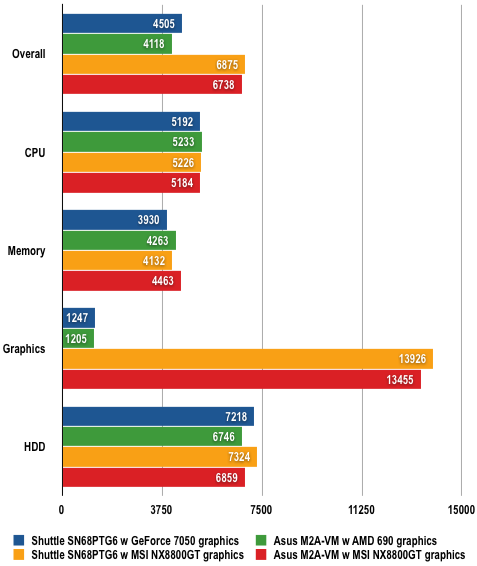
Longer bars are better
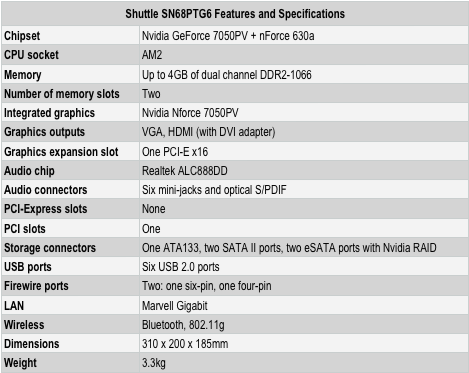
If you’re considering the Shuttle as a Media Centre PC we feel that the ICE cooling system is too noisy. It’s an effective system that works with a range of processors in different models of Shuttle by moving the heat from the CPU heatsink through some heatpipes to a large radiator at the rear of the case. This radiator is covered by a 100mm fan which blows air through the radiator and out of the case.
However, the fan is quite noisy. An Athlon 64 X2 6000+ will demand all the cooling that you can throw at it but a more sensible processor such as an X2 4200+ or 5000+ requires less cooling. We've no doubt the fan on the SN68PTG6 could be quieter but as things stand the Shuttle produces a similar level of noise to an Xbox 360. No problem for a games console but too high for a Media Centre.
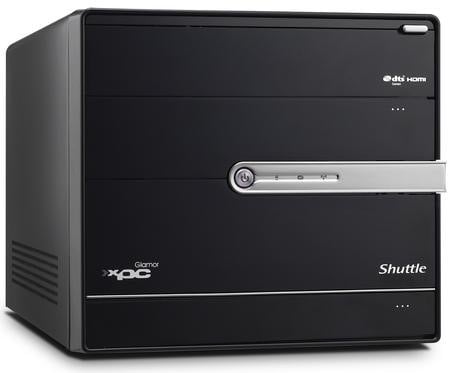
Glamorous?
The alternative scenario is that you want to build a dual-core PC that has the capability for regular day-to-day tasks such as email, eBay, music playback and movies. The Shuttle works well enough at these tasks but it’s hard to see why you’d go down the AMD route instead of sticking with an Intel processor. You can buy an Athlon 64 X2 4200+ for £45, although the X2 5000+ that we used in testing costs £70, but you can buy a 2.2GHz Core 2 Duo E4500 for £80.
There's no doubt in the mind of your reviewer that the Core 2 Duo is well worth the extra cash, but if you're on a tight budget then the AMD option might be tempting. The problem is that the SN68PTG6 is relatively expensive because it carries a number of high-end features.
At the bottom of the front panel is a cosmetic flap that covers two USB ports, a mini Firewire port and the audio jacks for a headset. All standard stuff, but the shuttle also carries a fingerprint reader for added security as part of the Windows log-on procedure. It’s an unusual extra for a budget PC and we found it to be effectively useless as we were unable to register a fingerprint in ten attempts. This kind of thing works well on a laptop, where the reader can be placed horizontally, but not on a desktop where it's mounted vertically.
Shuttle quite reasonably includes 802.11g Wi-FI in this model but the inclusion of Bluetooth must surely add cost for little tangible benefit.
On the rear of the Shuttle there are five audio mini jacks, digital optical output, four USB ports, one Firewire and two eSATA ports, and there are internal expansion slots in the shape of a PCI Express graphics slot and one PCI slot.
3DMark06 Results
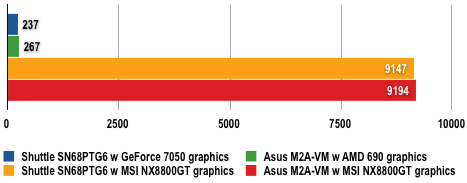
Longer bars are better
During our testing, we used a GeForce 8800GT graphics card and had to work around the limitations of the wiring harness. There’s no six-pin PCI Express connector so we used an adapter. However, there was only a single Molex connector instead of the two that you would normally use. Happily this bodge worked successfully and the 8800GT ran properly, so the Shuttle could double up as a gaming rig. But would you really want an AMD gaming PC when you can have a Core 2 Duo for the same price?
Verdict
Shuttle has successfully built a nice-looking barebones that uses an AMD processor, but the SN68PTG6 is aimed at the luxury end of the market. This is a strange combination of features, as the performance could be improved by using Intel hardware. A better approach is to build a quiet, cheap AMD Media Centre using a Micro-ATX AMD 690 motherboard with HDMI output.